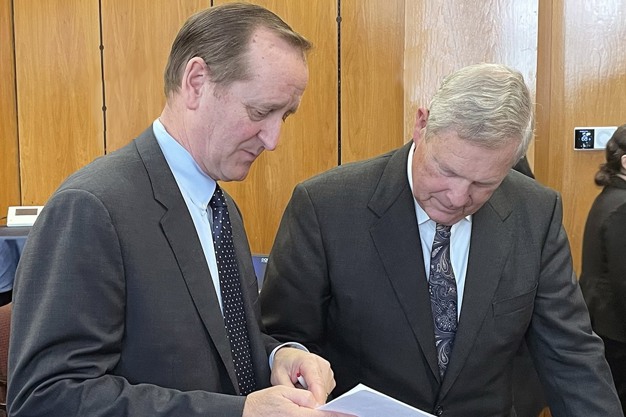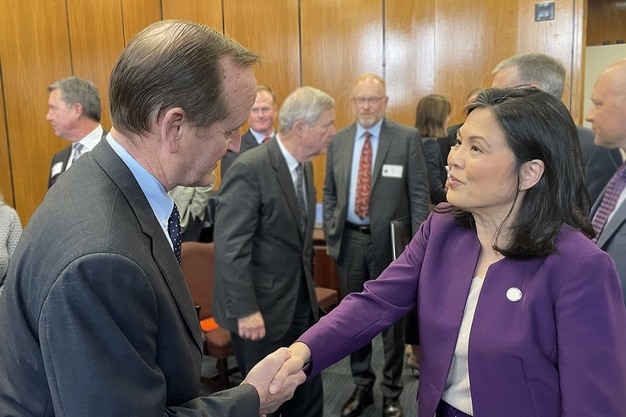The U.S. Apple Association (USApple) met with the U.S. Secretary of Agriculture, Tom Vilsack, and the Acting Secretary of Labor, Julie Su. The meeting centered around agricultural labor. USApple's President and CEO, Jim Bair, and senior vice president, Diane Kurrle, attended the meeting alongside other agriculture trade associations.
 Jim Bair with Secretary of Agriculture, Tom Vilsack. Bair is showing an economic analysis of apple production costs.
Jim Bair with Secretary of Agriculture, Tom Vilsack. Bair is showing an economic analysis of apple production costs.
Apple growing, harvesting, and packing are highly labor intensive. The U.S. will produce 25 billion apples this year, and every single one must be hand-picked. Without an adequate domestic workforce, most apple growers have turned to the H-2A agricultural guestworker program. However, the cost of the H-2A program has become untenable.
"Presenting our case directly to two members of President Biden's Cabinet is a promising start," said Jim Bair, president and CEO of USApple. "The situation is long overdue for action, and fixing it in a deeply divided Congress is unlikely. We continue to ensure that apple growers' voices are heard at the highest levels of government and will push for any White House actions that can help, knowing it will be an uphill climb."
With escalating H-2A costs, labor now makes up more than 60 percent of production costs for apple growers. In contrast, according to the latest USDA Ag Census, labor accounted for 12 percent of expenses for all U.S. farms.
 Jim Bair with Acting Secretary of Labor, Julie Su.
Jim Bair with Acting Secretary of Labor, Julie Su.
To make matters more dire, over the last year, retail prices for apples have declined by 14 percent. The prices farmers receive are down by much more – farmgate Honeycrisp prices, for instance, are down by as much as 50 percent or more year-over-year. This is particularly hard on growers as, in the year leading up to this season, the costs to grow apples were up 34 percent due to inflation and increasing labor costs.
The Adverse Effect Wage Rate (AEWR) continues to outpace the general marketplace with year-over-year rates increasing about 7 percent in most apple states. Growers from large to small and coast to coast report input costs that far exceed their returns. The government has to come up with a better, more accurate way of setting the wage rate.
 For more information:
For more information:
Lynsee Gibbons
US Apple Association
[email protected]
www.usapple.org
